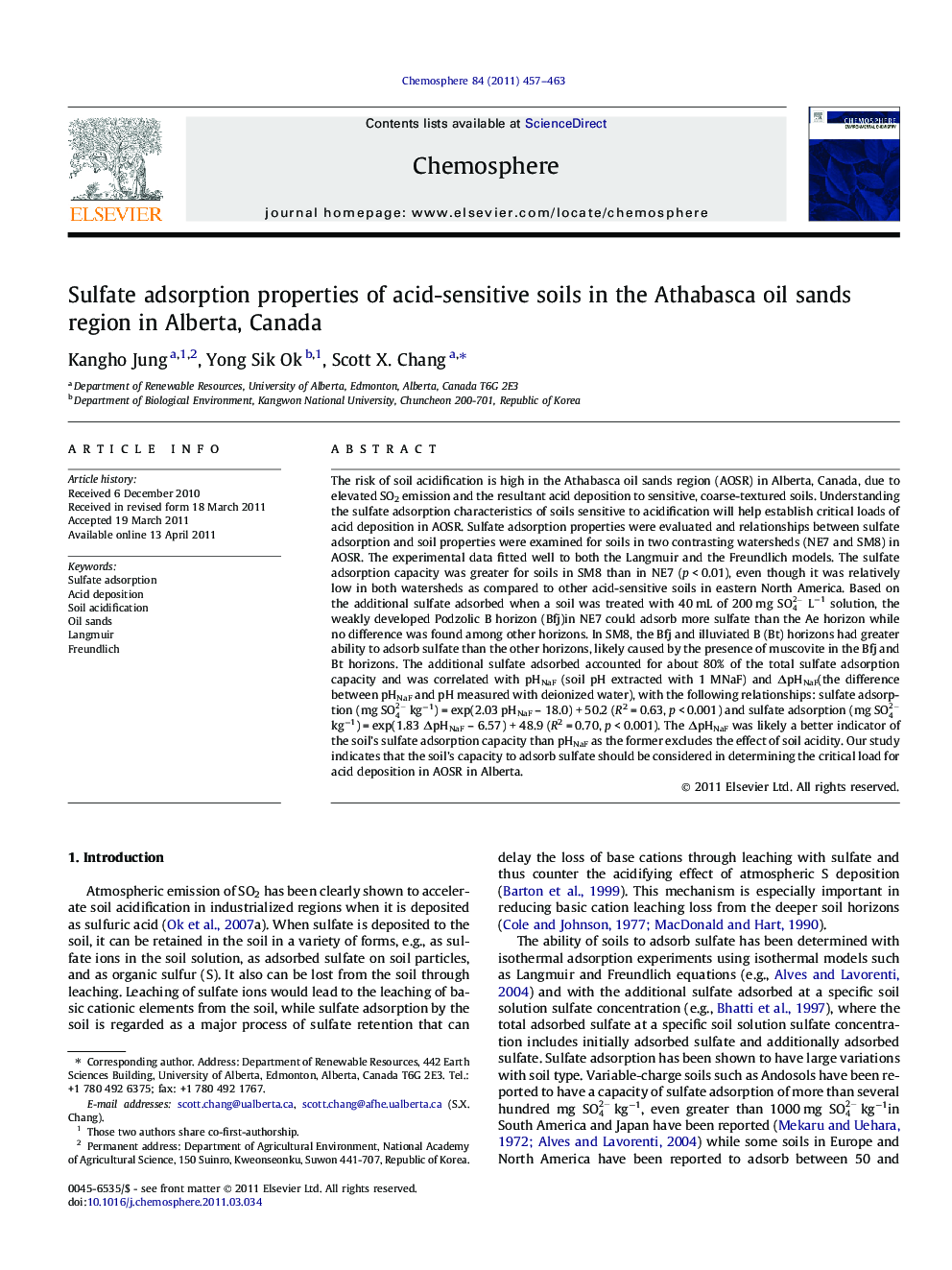| کد مقاله | کد نشریه | سال انتشار | مقاله انگلیسی | نسخه تمام متن |
|---|---|---|---|---|
| 4410896 | 1307568 | 2011 | 7 صفحه PDF | دانلود رایگان |

The risk of soil acidification is high in the Athabasca oil sands region (AOSR) in Alberta, Canada, due to elevated SO2 emission and the resultant acid deposition to sensitive, coarse-textured soils. Understanding the sulfate adsorption characteristics of soils sensitive to acidification will help establish critical loads of acid deposition in AOSR. Sulfate adsorption properties were evaluated and relationships between sulfate adsorption and soil properties were examined for soils in two contrasting watersheds (NE7 and SM8) in AOSR. The experimental data fitted well to both the Langmuir and the Freundlich models. The sulfate adsorption capacity was greater for soils in SM8 than in NE7 (p < 0.01), even though it was relatively low in both watersheds as compared to other acid-sensitive soils in eastern North America. Based on the additional sulfate adsorbed when a soil was treated with 40 mL of 200 mg SO42- L−1 solution, the weakly developed Podzolic B horizon (Bfj)in NE7 could adsorb more sulfate than the Ae horizon while no difference was found among other horizons. In SM8, the Bfj and illuviated B (Bt) horizons had greater ability to adsorb sulfate than the other horizons, likely caused by the presence of muscovite in the Bfj and Bt horizons. The additional sulfate adsorbed accounted for about 80% of the total sulfate adsorption capacity and was correlated with pHNaF (soil pH extracted with 1 MNaF) and ΔpHNaF(the difference between pHNaF and pH measured with deionized water), with the following relationships: sulfate adsorption (mg SO42- kg−1) = exp(2.03 pHNaF – 18.0) + 50.2 (R2 = 0.63, p < 0.001) and sulfate adsorption (mg SO42- kg−1) = exp(1.83 ΔpHNaF – 6.57) + 48.9 (R2 = 0.70, p < 0.001). The ΔpHNaF was likely a better indicator of the soil’s sulfate adsorption capacity than pHNaF as the former excludes the effect of soil acidity. Our study indicates that the soil’s capacity to adsorb sulfate should be considered in determining the critical load for acid deposition in AOSR in Alberta.
► Sulfate adsorption by soils in the oil sands region was evaluated with two isotherm models.
► Sulfate adsorption was low for soils in the oil sands region.
► The difference between pHNaF and pHwater explained sulfate adsorption capacity.
► Sulfate adsorption should be considered in determining critical loads for acid deposition.
Journal: Chemosphere - Volume 84, Issue 4, July 2011, Pages 457–463